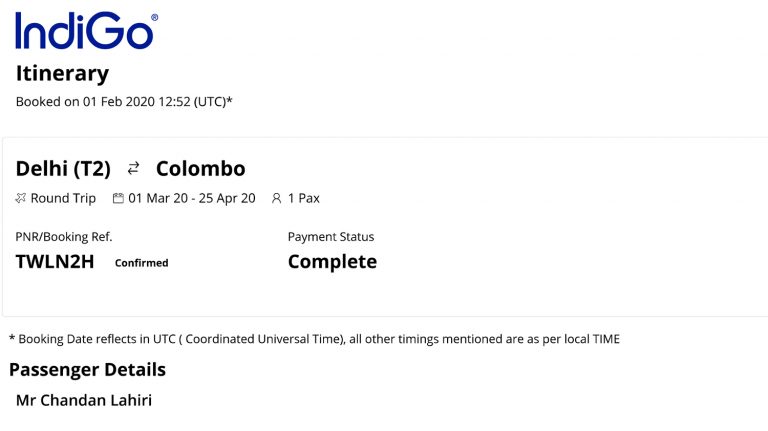The Beaufort Scale
In the previous post I had briefly alluded to the Beaufort Scale. Let us look at what it is in just a little more detail.
The Beaufort scale was devised in 1805 by the Francis Beaufort, a hydrographer and Royal Navy officer. Interestingly, the scale that carries his name was first used aboard HMS Beagle under Captain Robert FitzRoy who later went on to set up the Met Office in Britain. Till the Beaufort Scale was adopted, sailors used to make weather observations but without any standardisation and would often be subjective.
Essentially, the Beaufort scale measures wind speed to observed conditions at sea or on land.
Originally the scale had 13 classes and did not have wind speeds but the effect of the wind on the canvas sails of a ship. It was in 1916 that the descriptions were changed to how the sea and not the sails behaved. This was primarily due to the introduction of steam powered ships instead of sailing ships. The classes were extended in 1946 from 13 to 17. However, forces 13 to 17 were intended to apply only to special cases, such as tropical cyclones. Internationally, WMO Manual on Marine Meteorological Services defined the Beaufort Scale only up to force 12 and there was no recommendation on the use of the extended scale.
The Beaufort scale is neither an exact or an objective scale since it is largely based on visual and subjective observation of a ship and of the sea. However, this has brought about a certain amount of standardization making life easier for sea going vessels. Given that different countries interpret the scale a little differently. Usually small craft advisories go out from the met department when the wind speeds are around 6 on the Beaufort Scale that is described when “Large waves begin to form; the white foam crests are more extensive everywhere; probably some spray” and the wind speeds are between 39 and 49 kmph with wave heights between nine to thirteen feet.
I am NOT going to follow this “small craft advisory”.
No way. I am not going to find myself facing wind speeds of 40 kmph and more, paddling through and over waves greater than ten odd feet. For me the “small scale advisory” will hit at a Beaufort Scale of 2 … maybe even a 3. This is for two reasons. First, with a higher wave height, frequent white caps on the waves and a headwind stronger than I can paddle, will be an exercise in futility, will make the boat unstable, frequent capsizes become a distinct reality, making the paddle highly frustrating.
Read along with the Beaufort Scale is the Sea State, which is the general condition of the surface on a large body of water, with respect to wind waves and swell. It is characterised by wave height, period, and power spectrum. The sea state varies with time, as the wind conditions or swell conditions change. Like the Beaufort Scale, it is assessed by visual reading or through instruments like weather buoys, radars, satellites, etc.
The World Meteorological Organisation Sea State Code largely adopts the ‘wind sea’ definition of the Douglas Sea Scale, a scale which measures the height of the waves and also the swell. It is simple to follow and is expressed in one of 10 degrees.
| Sea State Code | Wave height (metres) | Wave height (feet) | Characteristic |
| 0 | 0.00 | 0.00 | Calm (glassy) |
| 1 | 0.00 – 0.10 | 0.00 – 0.33′ | Calm (rippled) |
| 2 | 0.10 – 0.50 | 3.9″ – 1’7.7″ | Smooth (wavelets) |
| 3 | 0.50 – 1.25 | 1’8″ – 4’1″ | Slight |
| 4 | 1.25 – 2.50 | 4’1″ – 8’2″ | Moderate |
| 5 | 2.50 – 4.00 | 8’2″ – 13’1″ | Rough |
| 6 | 4.00 – 6.00 | 13′ – 20′ | Very rough |
| 7 | 6.00 – 9.00 | 20′ – 30′ | High |
| 8 | 9.00 – 14.00 | 30′ – 46′ | Very high |
| 9 | Over 14 | Over 46′ | Phenomenal |
Wave lengths are classified as Short (less than 100 m), Average (100-200 m) and Long (more than 200 m). Wave heights are classified as Low (less than 2 m), Medium (2-4 m) and High (more than 4.01 m).
Again, I will not be out at sea in my flimsy inflatable sixteen foot rubber boat when the Sea State is in excess of “3”. A maximum wave height of four feet is what I am willing to undertake. Call me crazy, but I am not yet a salty old sailor … maybe I will become one at the end of the expedition when I finally beach the boat in Colombo after having circumnavigated the Pearl of the Indian Ocean. Till then, I am going to take it safe and easy so that I can live to paddle another day.
#slowboatsrilanka
#otasurvivalschool
#chandanlahiri
#srilanka
![]()








I am really glad you have researched and learnt the Beaufort Scale.
I shall carry on reading the rest of the full article now. ?